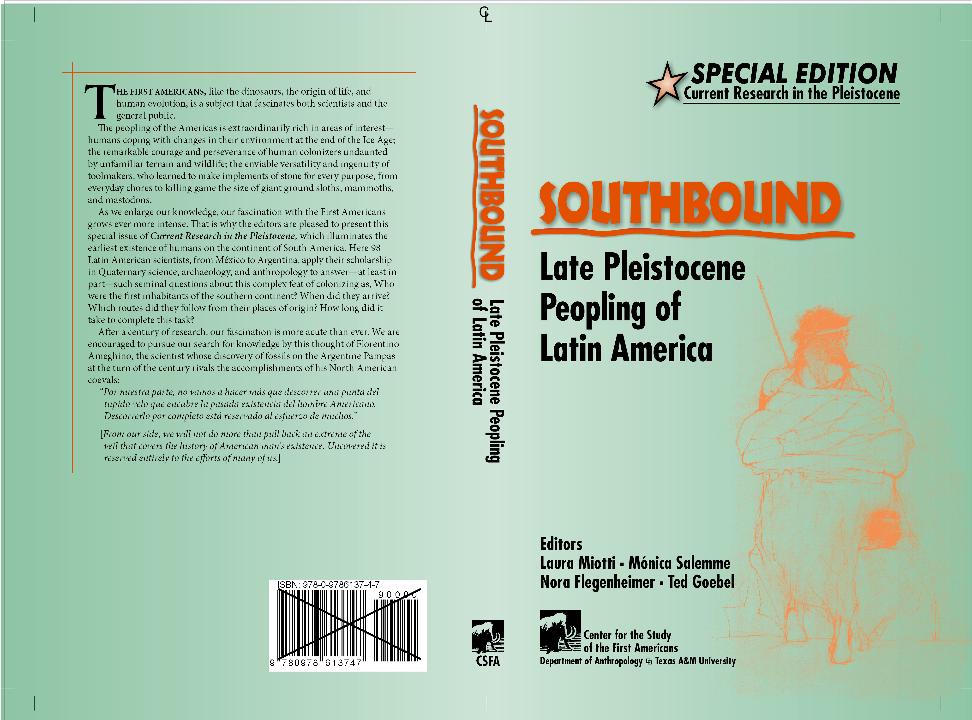Artículo
Broken stone tools from Cerro El Sombrero Cima (Tandilia Range, Argentina)
Fecha de publicación:
11/2012
Editorial:
University of Texas A&M
Revista:
Current Research in the Pleistocene
ISSN:
8755-898X
Idioma:
Inglés
Tipo de recurso:
Artículo publicado
Clasificación temática:
Resumen
Cerro El Sombrero Cima is an open air site where the early inhabitants of the Pampean Region carried out some specific re-equipment tasks associated with hunting weapons. This site is an outstanding feature of the landscape, both the site and the activities that took place there must have had special meanings for its inhabitants. A set of characteristics distinguishes this place from others corresponding to the same or related groups of hunter-gatherers. Several of these characteristics correspond to the lithic assemblage. This presentation focuses on one of them: the unusually high breakage ratio. The results of fractured stone tools analysis are presented here. A wide variety of fracture types were identified on lithic artifacts and many of the causes involved in their breakage were recognized. Most of the fractures of the stone tool assemblage had accidental origins, due to flintknapping errors, impact on projectile points and trampling. Also, a small percentage of intentional fractures were produced on a group of tools with specific traits. The results of this analysis were usefull to evaluate previous inferences about the tasks carried out in the site. This study also provided information to discuss some of the choices people made regarding the use and discard of stone tools.
Palabras clave:
ACCIDENTAL BREAKAGE
,
INTENTIONAL BREAKAGE
,
PAMPEAN REGION
Archivos asociados
Licencia
Identificadores
Colecciones
Articulos(CCT - MAR DEL PLATA)
Articulos de CTRO.CIENTIFICO TECNOL.CONICET - MAR DEL PLATA
Articulos de CTRO.CIENTIFICO TECNOL.CONICET - MAR DEL PLATA
Citación
Weitzel, María Celeste; Broken stone tools from Cerro El Sombrero Cima (Tandilia Range, Argentina); University of Texas A&M; Current Research in the Pleistocene; Special; 11-2012; 111-115
Compartir




